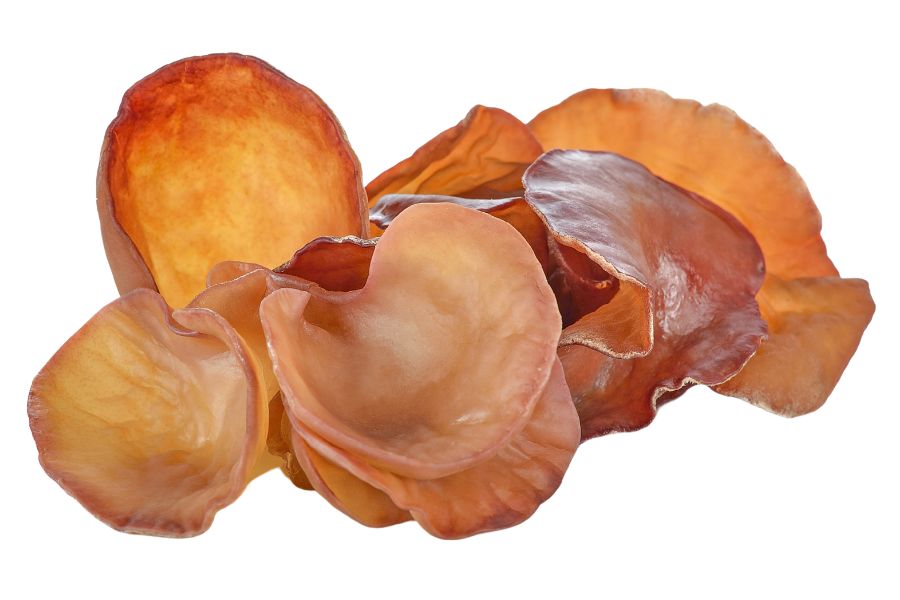Kentucky’s woods, fields, and riverbanks offer amazing finds for those who know where to look. From tasty mushrooms to healing herbs, the state is full of natural goods worth searching for. Many locals make hundreds or even thousands of dollars each season by gathering these wild treasures.
Spring brings morel mushrooms, which fetch up to $50 per pound at farmers markets and restaurants. These wrinkly delights hide under certain trees after warm rains. Summer offers blackberries and wild strawberries along trails and old fence rows, selling for premium prices as “wild-harvested” berries.
Fall rewards foragers with walnuts, hickory nuts, and medicinal roots. Winter still offers bark from slippery elm and sassafras for teas and traditional remedies.
Learning to find these valuable plants takes practice but pays off. Kentucky’s varied landscapes, from mountains to river bottoms, create perfect growing spots for different valuable species. The next time you walk in Kentucky’s outdoors, look closely at what grows around you.
What We Cover In This Article:
- What Makes Foreageables Valuable
- Foraging Mistakes That Cost You Big Bucks
- The Most Valuable Forageables in the State
- Where to Find Valuable Forageables in the State
- When to Forage for Maximum Value
- The extensive local experience and understanding of our team
- Input from multiple local foragers and foraging groups
- The accessibility of the various locations
- Safety and potential hazards when collecting
- Private and public locations
- A desire to include locations for both experienced foragers and those who are just starting out
Using these weights we think we’ve put together the best list out there for just about any forager to be successful!
A Quick Reminder
Before we get into the specifics about where and how to find these plants and mushrooms, we want to be clear that before ingesting any wild plant or mushroom, it should be identified with 100% certainty as edible by someone qualified and experienced in mushroom and plant identification, such as a professional mycologist or an expert forager. Misidentification can lead to serious illness or death.
All plants and mushrooms have the potential to cause severe adverse reactions in certain individuals, even death. If you are consuming wild foragables, it is crucial to cook them thoroughly and properly and only eat a small portion to test for personal tolerance. Some people may have allergies or sensitivities to specific mushrooms and plants, even if they are considered safe for others.
The information provided in this article is for general informational and educational purposes only. Foraging involves inherent risks.
What Makes Foreageables Valuable
Some wild plants, mushrooms, and natural ingredients can be surprisingly valuable. Whether you’re selling them or using them at home, their worth often comes down to a few key things:
The Scarcer the Plant, the Higher the Demand
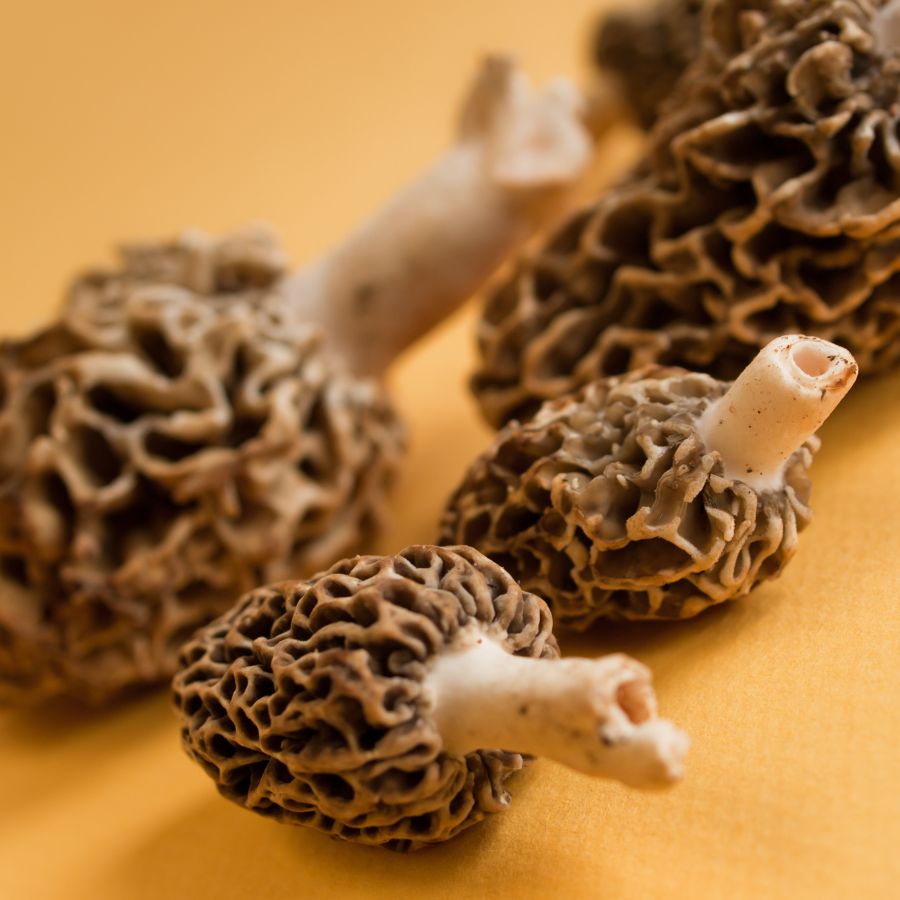
Some valuable forageables only show up for a short time each year, grow in hard-to-reach areas, or are very difficult to cultivate. That kind of rarity makes them harder to find and more expensive to buy.
Morels, truffles, and ramps are all good examples of this. They’re popular, but limited access and short growing seasons mean people are often willing to pay more.
A good seasonal foods guide can help you keep track of when high-value items appear.
High-End Dishes Boost the Value of Ingredients
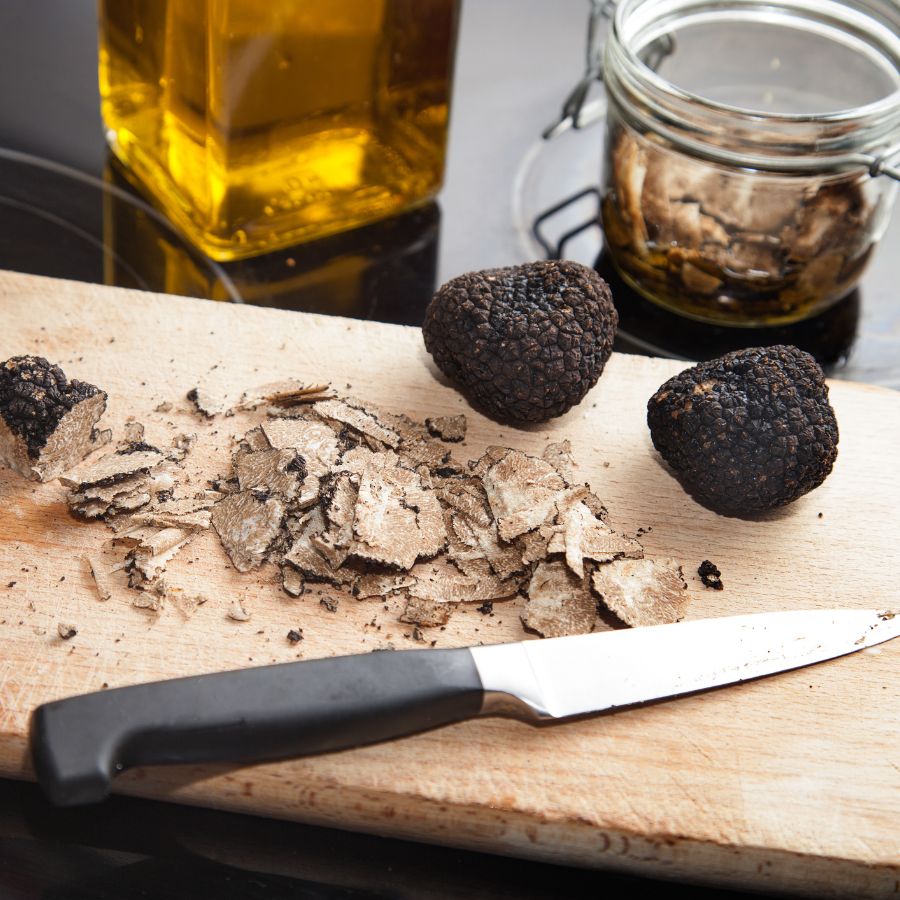
Wild ingredients that are hard to find in stores often catch the attention of chefs and home cooks. When something unique adds flavor or flair to a dish, it quickly becomes more valuable.
Truffles, wild leeks, and edible flowers are prized for how they taste and look on a plate. As more people try to include them in special meals, the demand—and the price—tends to rise.
You’ll find many of these among easy-to-identify wild mushrooms or herbs featured in fine dining.
Medicinal and Practical Uses Drive Forageable Prices Up
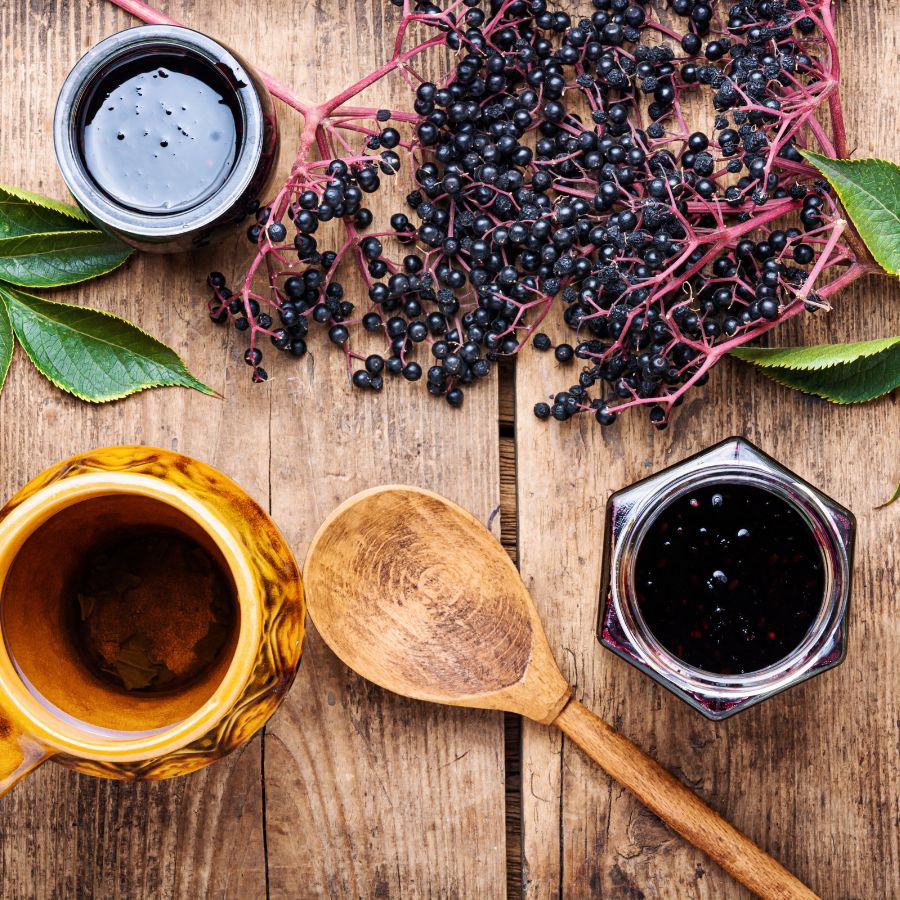
Plants like ginseng, goldenseal, and elderberries are often used in teas, tinctures, and home remedies. Their value comes from how they support wellness and are used repeatedly over time.
These plants are not just ingredients for cooking. Because people turn to them for ongoing use, the demand stays steady and the price stays high.
The More Work It Takes to Harvest, the More It’s Worth
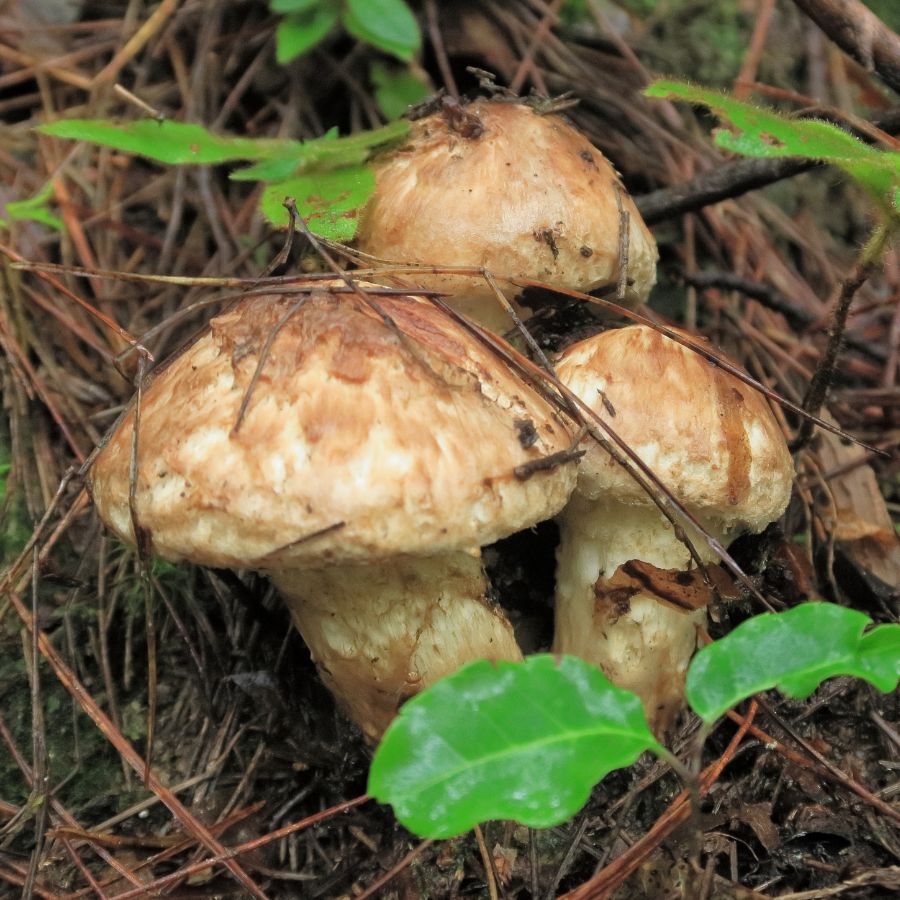
Forageables that are hard to reach or tricky to harvest often end up being more valuable. Some grow in dense forests, need careful digging, or have to be cleaned and prepared before use.
Matsutake mushrooms are a good example, because they grow in specific forest conditions and are hard to spot under layers of leaf litter. Wild ginger and black walnuts, meanwhile, both require extra steps for cleaning and preparation before they can be used or sold.
All of that takes time, effort, and experience. When something takes real work to gather safely, buyers are usually willing to pay more for it.
Foods That Keep Well Are More Valuable to Buyers
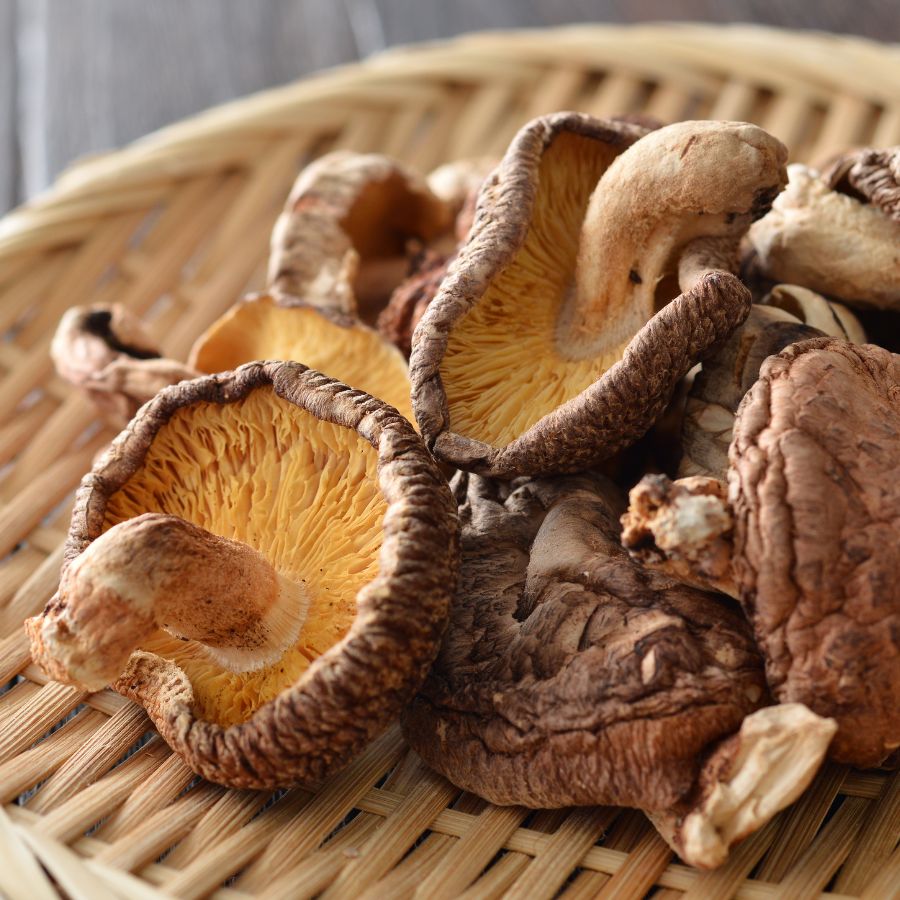
Some forageables, like dried morels or elderberries, can be stored for months without losing their value. These longer-lasting items are easier to sell and often bring in more money over time.
Others, like wild greens or edible flowers, have a short shelf life and need to be used quickly. Many easy-to-identify wild greens and herbs are best when fresh, but can be dried or preserved to extend their usefulness.
A Quick Reminder
Before we get into the specifics about where and how to find these mushrooms, we want to be clear that before ingesting any wild mushroom, it should be identified with 100% certainty as edible by someone qualified and experienced in mushroom identification, such as a professional mycologist or an expert forager. Misidentification of mushrooms can lead to serious illness or death.
All mushrooms have the potential to cause severe adverse reactions in certain individuals, even death. If you are consuming mushrooms, it is crucial to cook them thoroughly and properly and only eat a small portion to test for personal tolerance. Some people may have allergies or sensitivities to specific mushrooms, even if they are considered safe for others.
The information provided in this article is for general informational and educational purposes only. Foraging for wild mushrooms involves inherent risks.
Foraging Mistakes That Cost You Big Bucks
When you’re foraging for high-value plants, mushrooms, or other wild ingredients, every decision matters. Whether you’re selling at a farmers market or stocking your own pantry, simple mistakes can make your harvest less valuable or even completely worthless.
Harvesting at the Wrong Time
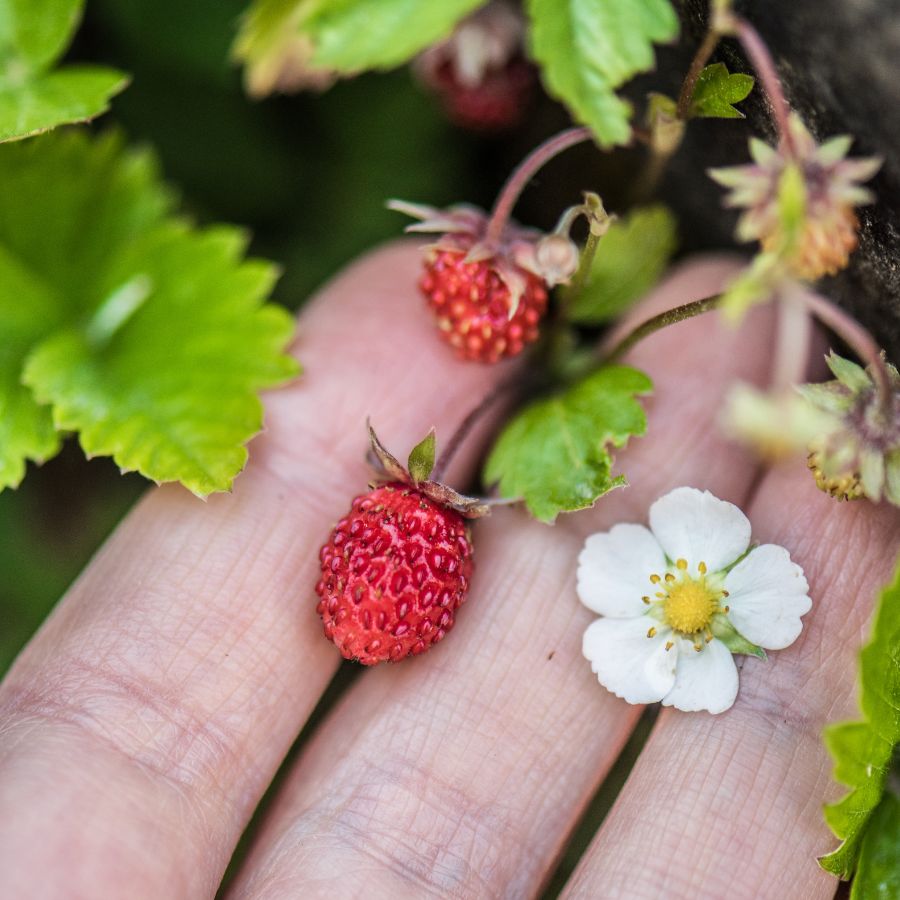
Harvesting at the wrong time can turn a valuable find into something no one wants. Plants and mushrooms have a short window when they’re at their best, and missing it means losing quality.
Morels, for example, shrink and dry out quickly once they mature, which lowers their weight and price. Overripe berries bruise in the basket and spoil fast, making them hard to store or sell.
Improper Handling After Harvest
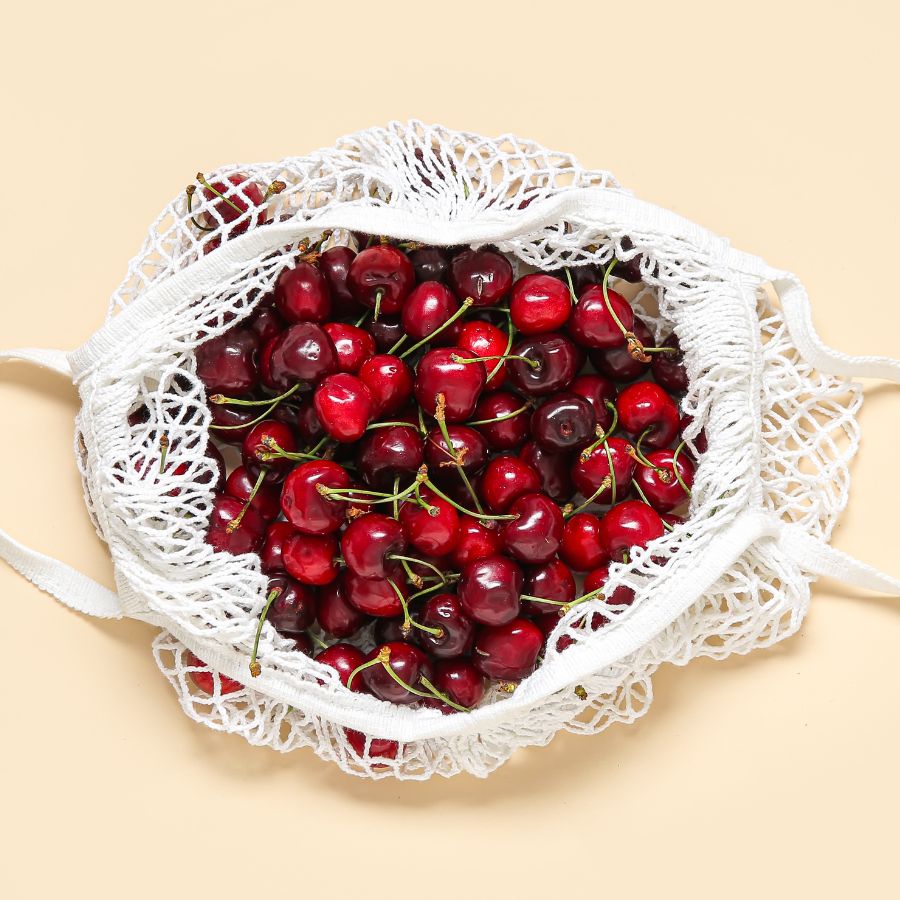
Rough handling can ruin even the most valuable forageables. Crushed mushrooms, wilted greens, and dirty roots lose both their appeal and their price.
Use baskets or mesh bags to keep things from getting smashed and let air circulate. Keeping everything cool and clean helps your harvest stay fresh and look better for longer.
This is especially important for delicate items like wild roots and tubers that need to stay clean and intact.
Skipping Processing Steps
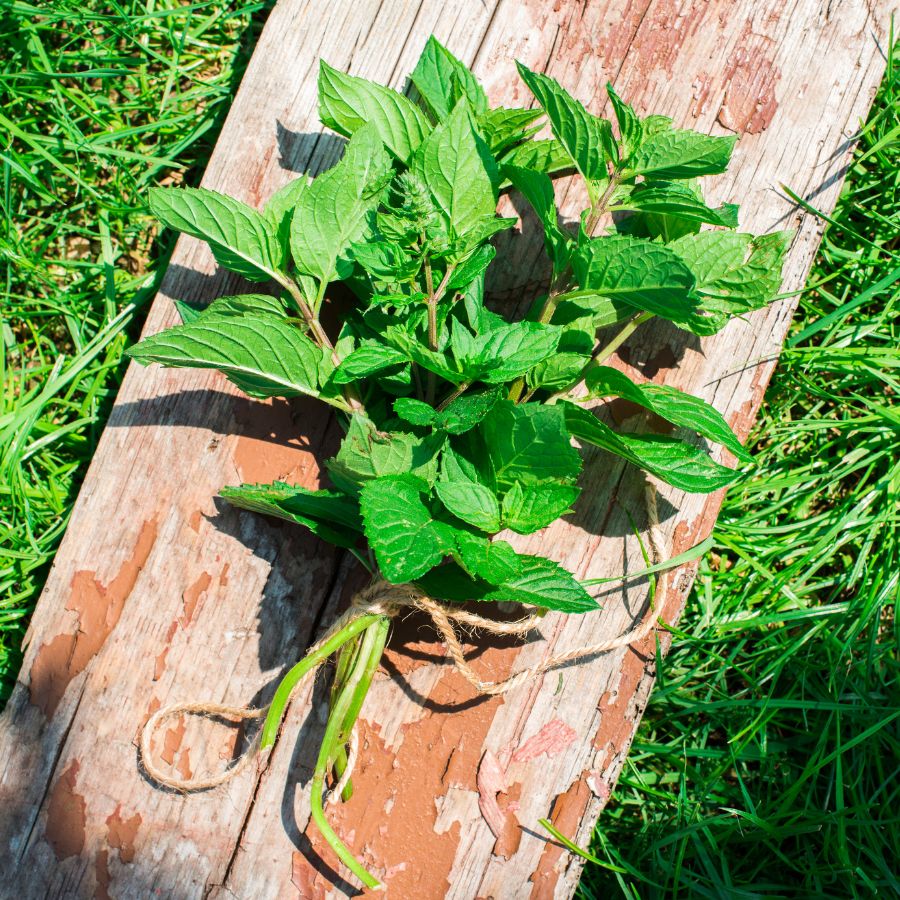
Skipping basic processing steps can cost you money. A raw harvest may look messy, spoil faster, or be harder to use.
For example, chaga is much more valuable when dried and cut properly. Herbs like wild mint or nettle often sell better when bundled neatly or partially dried. If you skip these steps, you may end up with something that looks unappealing or spoils quickly.
Collecting from the Wrong Area
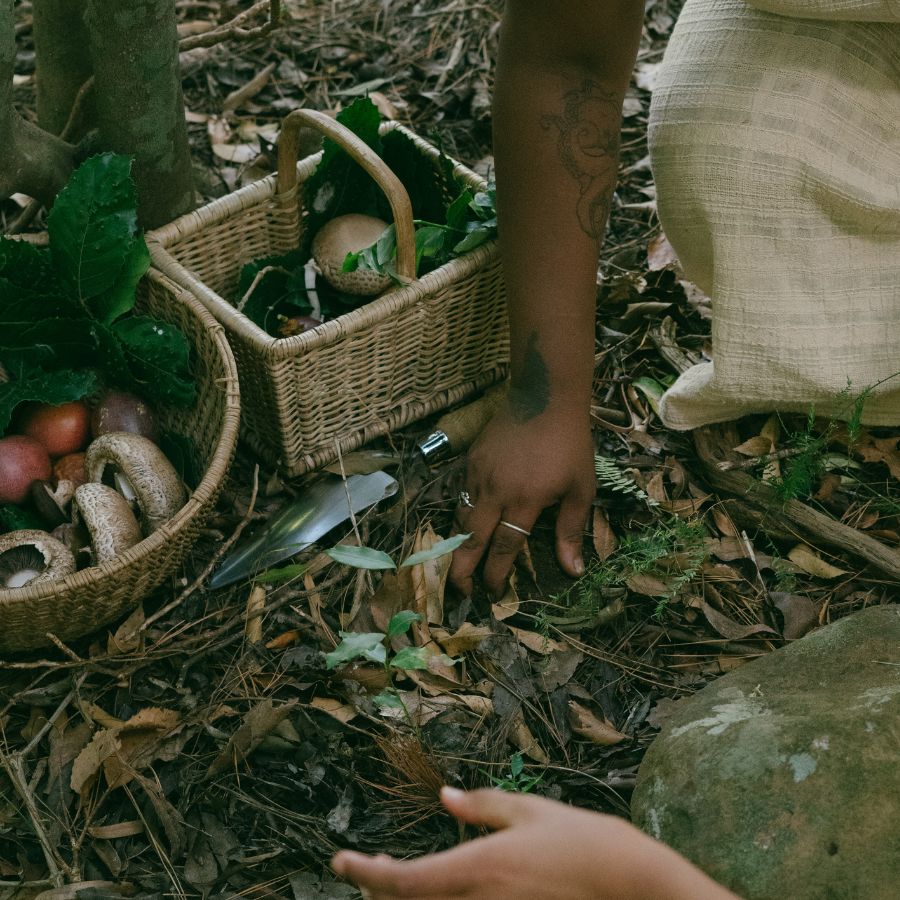
Harvesting in the wrong place can ruin a good find. Plants and mushrooms pulled from roadsides or polluted ground may be unsafe, no matter how fresh they look.
Buyers want to know their food comes from clean, responsible sources. If a spot is known for overharvesting or damage, it can make the whole batch less appealing.
These suburbia foraging tips can help you find overlooked spots that are surprisingly safe and productive.
Not Knowing the Market
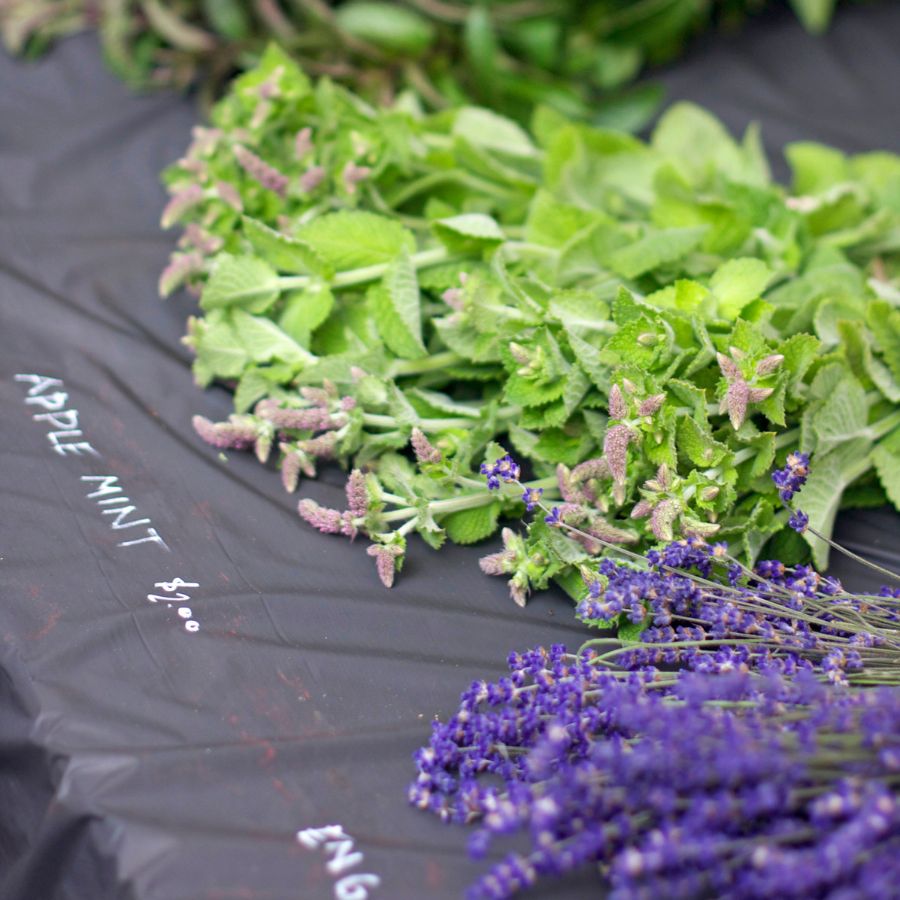
A rare plant isn’t valuable if nobody wants to buy it. If you gather in-demand species like wild ramps or black trumpets, you’re more likely to make a profit. Pay attention to what chefs, herbalists, or vendors are actually looking for.
Foraging with no plan leads to wasted effort and unsold stock. Keeping up with demand helps you bring home a profit instead of a pile of leftovers.
You can also brush up on foraging for survival strategies to identify the most versatile and useful wild foods.
Before you head out
Before embarking on any foraging activities, it is essential to understand and follow local laws and guidelines. Always confirm that you have permission to access any land and obtain permission from landowners if you are foraging on private property. Trespassing or foraging without permission is illegal and disrespectful.
For public lands, familiarize yourself with the foraging regulations, as some areas may restrict or prohibit the collection of mushrooms or other wild foods. These regulations and laws are frequently changing so always verify them before heading out to hunt. What we have listed below may be out of date and inaccurate as a result.
The Most Valuable Forageables in the State
Some of the most sought-after wild plants and fungi here can be surprisingly valuable. Whether you’re foraging for profit or personal use, these are the ones worth paying attention to:
Pawpaw (Asimina triloba)
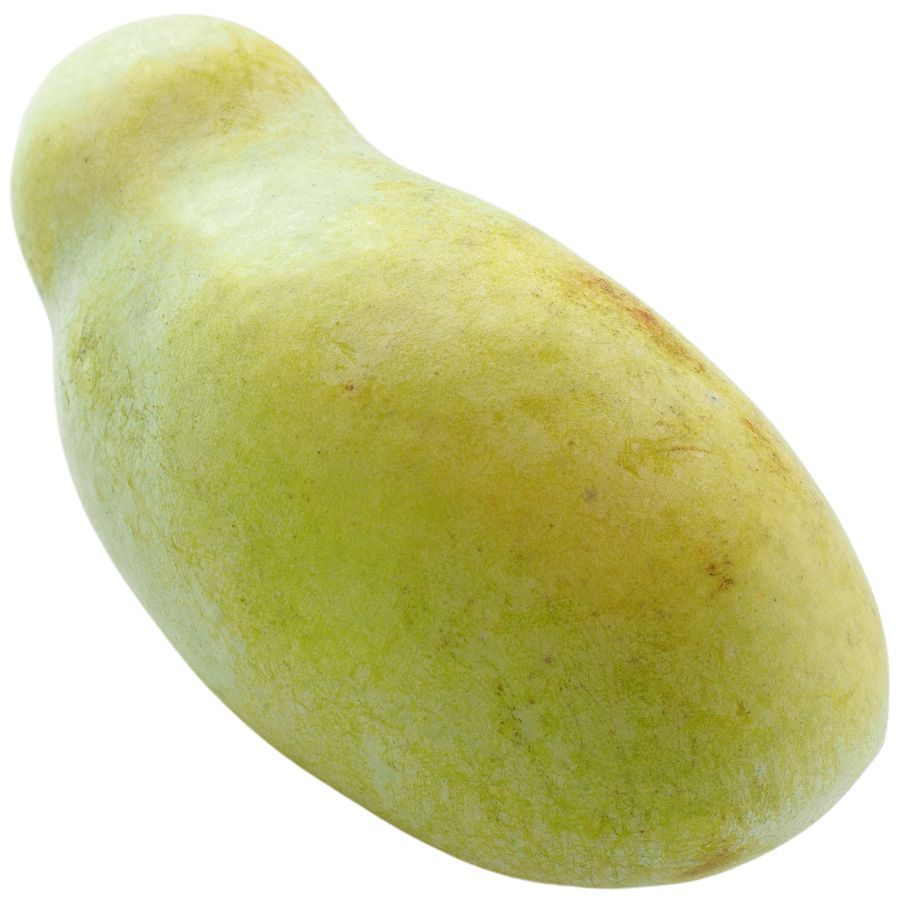
The pawpaw grows fruits that are green and shaped a little like small mangoes. Inside, the soft yellow flesh tastes like a blend of banana, mango, and melon, with a custard-like texture that melts in your mouth.
If you are comparing it to similar plants, keep in mind that young pawpaw trees can look a little like young magnolias because of their large leaves. True pawpaws grow fruits with large brown seeds tucked inside, while magnolias do not produce anything that looks or tastes similar.
You can eat the flesh straight out of the skin with a spoon, or mash it into puddings, smoothies, and even homemade ice cream. Some people also like to freeze it into cubes for later, although it does tend to brown quickly once exposed to air.
Stick to eating the soft inner flesh. Make sure not to ingest the skin and seeds of the fruit because they contain compounds that can upset your stomach.
This fruit is that it was a favorite snack of Native Americans and early explorers long before it started showing up in backyard gardens.
Hen of the Woods (Grifola frondosa)
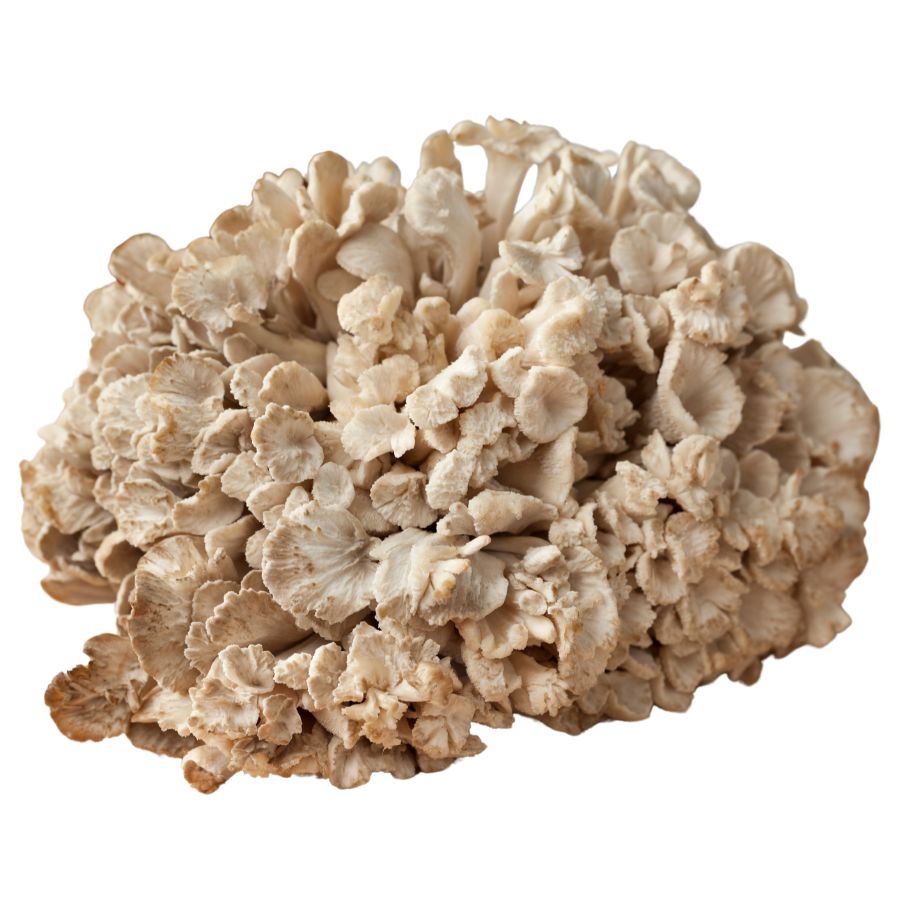
Hen of the Woods grows at the base of oak trees and looks like a fluffy chicken with its many folded caps. This mushroom forms large clusters that can weigh up to 50 pounds. It has grayish-brown caps with white undersides. Most people enjoy its meaty texture and rich, nutty flavor.
You can easily spot it by looking for layers of spoon-shaped caps growing in a circular pattern. There are no poisonous mushrooms that look like it, though some people mix it up with Maitake mushrooms.
Hen of the Woods contains good compounds that help your immune system. It has lots of protein, vitamins, and minerals. You can eat the whole mushroom, but the base might be tough.
Many cooks sauté, roast, or dry it to use later. It keeps its good flavor and health benefits no matter how you prepare it.
Sassafras Leaves (Sassafras albidum)
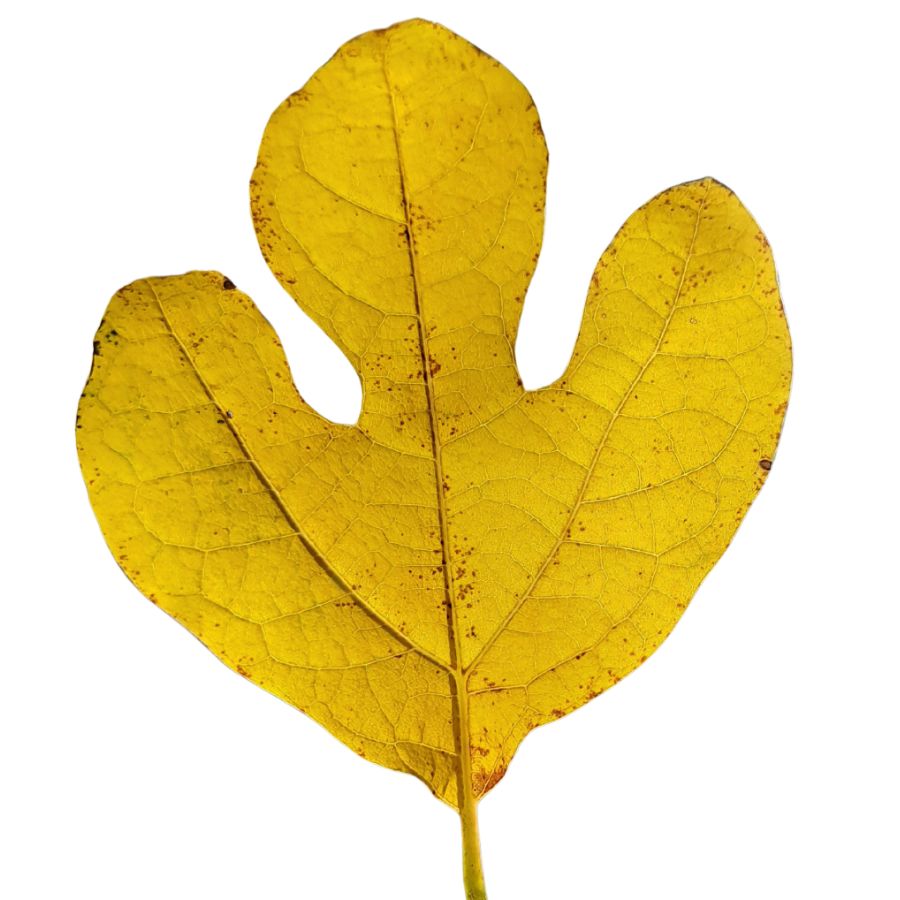
Sassafras trees have unique leaves shaped like mittens that people have cooked with for hundreds of years. The tree has three different leaf shapes: oval, mitten-shaped, and three-lobed. When you crush the leaves, they smell sweet and citrusy.
People have used all parts of the plant in the past, but now they mostly use the leaves for cooking. The dried and ground leaves make filé powder, which is important for Creole cooking, especially gumbo.
The leaves contain oils that give them their special smell and taste. When looking for Sassafras, check for the mitten shape and citrus smell. There are no dangerous plants that look like it, so beginners can safely collect it. Pick young, bright green leaves for the best flavor.
Black Morel (Morchella elata)
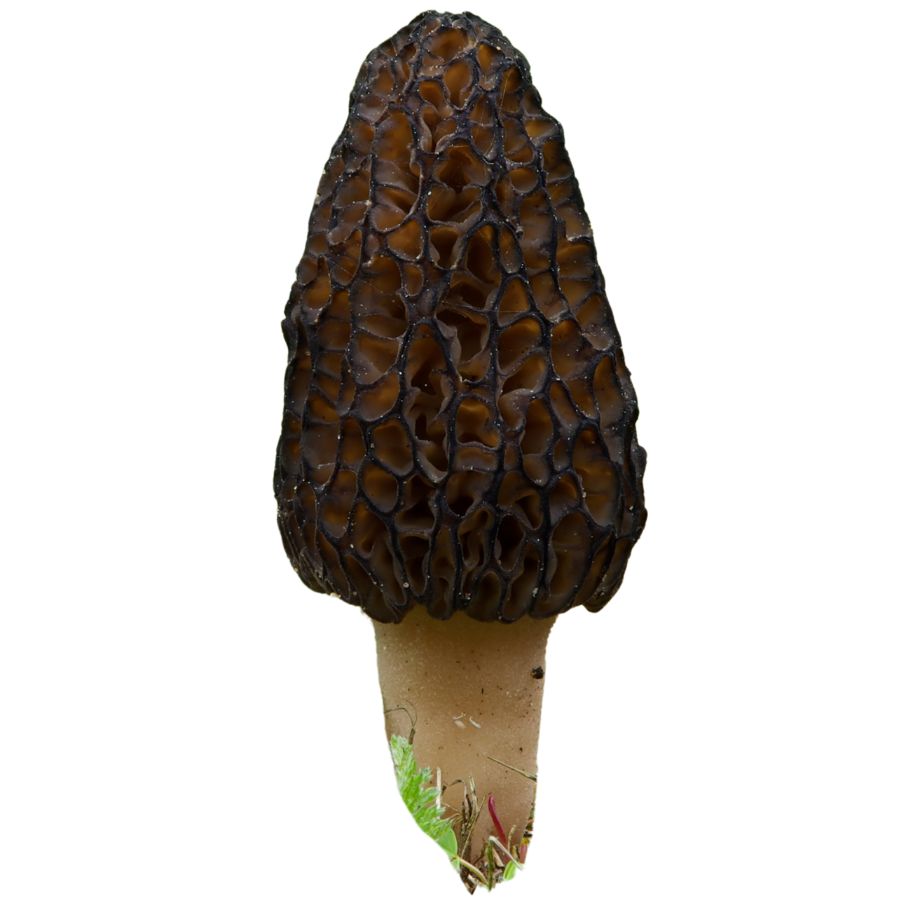
Black Morels have a special honeycomb pattern on their cone-shaped caps. Their stems and caps are hollow and connected at the bottom. Their surface has many ridges and pits. They taste nutty and earthy, which is why many chefs love them.
You can eat the whole mushroom, but you must cook it first. Never eat raw morels because they have toxins that cooking removes.
It’s very important to know what you’re picking because some similar mushrooms are dangerous. False morels can make you very sick and look similar, but they have wrinkled caps instead of pits and aren’t hollow inside. Always make sure your morel is completely hollow from stem to cap.
Spicebush Berries (Lindera benzoin)
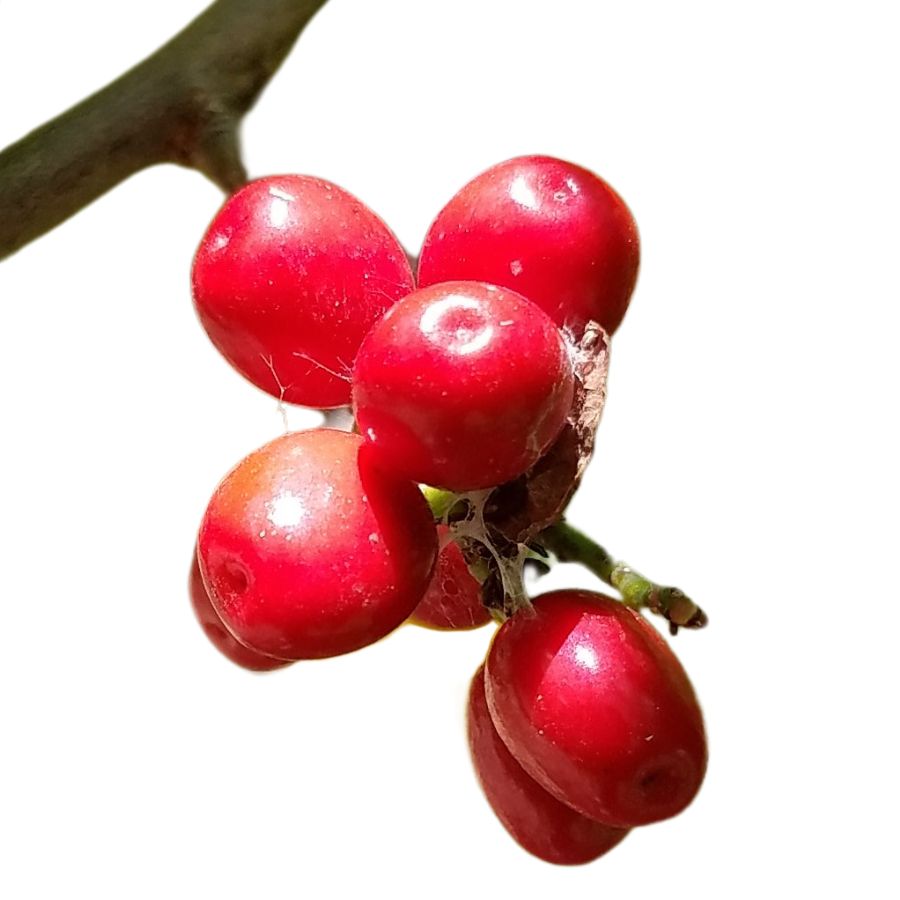
Spicebush has smooth-edged leaves that release a spicy citrus scent when crushed, and it produces clusters of red berries that grow close to the stem. Those berries, along with the young twigs and leaves, are all edible and flavorful.
The berries are especially valued for their warm, peppery kick and are often dried and ground as a seasoning. You can steep the leaves and twigs into tea or simmer them into broths.
Avoid confusing it with lookalikes like Carolina allspice, which has larger, thicker leaves and lacks the same aromatic quality. Its berries also differ in size and internal seed structure.
Spicebush has a long history of use in traditional cooking for its mild numbing effect and warming flavor. Only the berries, leaves, and tender twigs should be consumed—avoid the bark and roots.
Wild Hazelnut (Corylus americana)
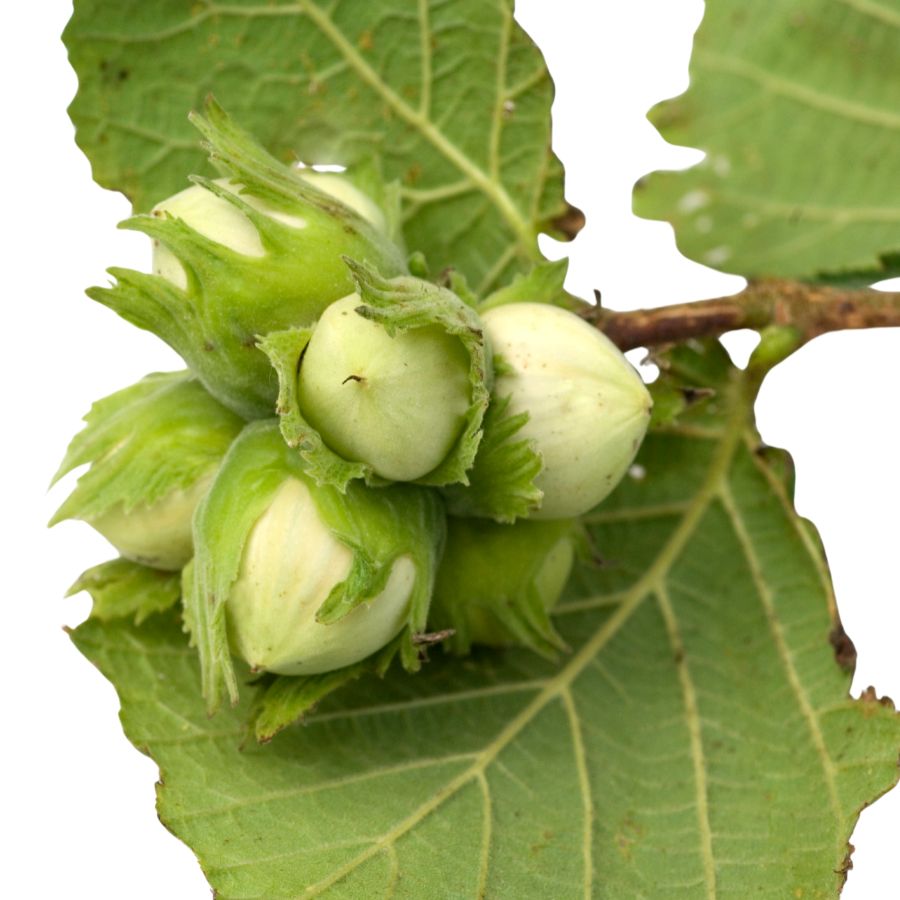
Clusters of round, fringed husks tucked among bushy green leaves usually mean you have found American hazelnut, sometimes called American filbert. It grows as a wide, shrubby plant that spreads along forest edges, open woods, and overgrown fields.
The nuts inside are rich and buttery, with a firm texture that turns creamy when roasted or ground into flour. You can eat them raw, toss them into baked goods, or crush them into a thick, flavorful spread.
It helps to know the difference between American hazelnut and its close cousin, beaked hazelnut, which hides its nut inside a long, pointed husk. Both plants are safe to eat, but the shape of the husk makes it easy to tell which one you have.
Only the inner nut is gathered for food; the leafy husk and hard outer shell are tossed aside. If you leave them too long, local wildlife like squirrels will clear out the patch faster than you can.
Wild Elderflowers (Sambucus canadensis)
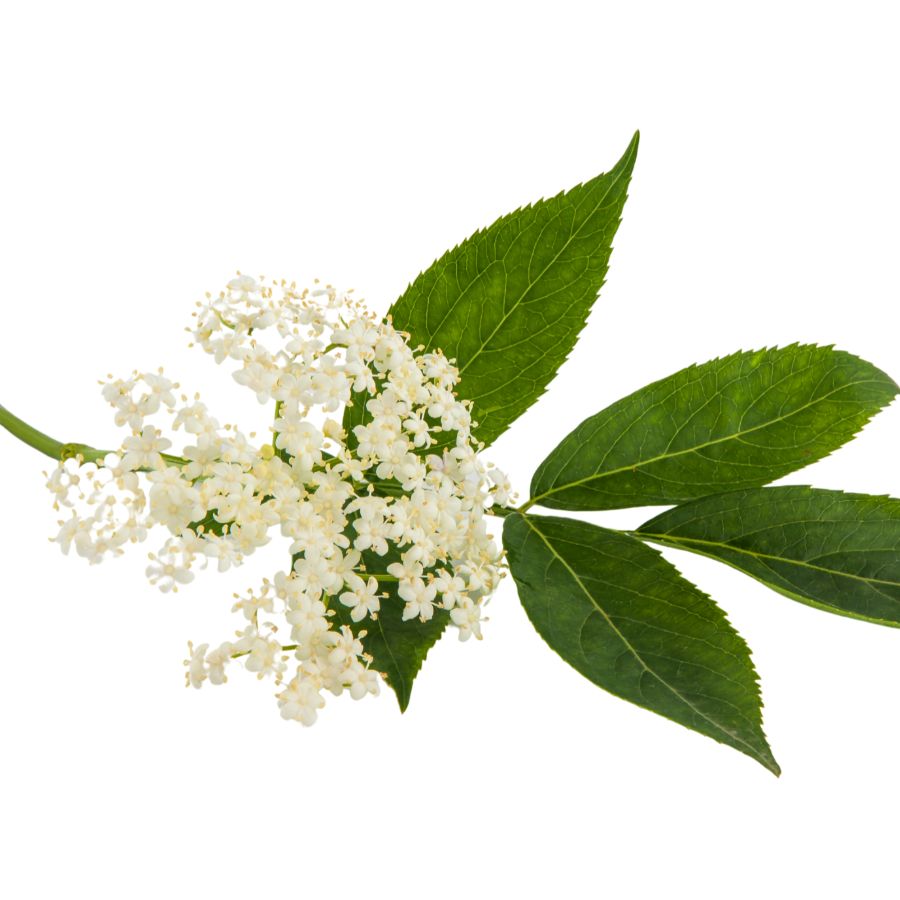
Elderberry bushes grow small white flowers in large, flat groups during late spring. These flowers smell sweet like honey, which brings in bees and people who collect wild plants. Each tiny flower has five petals in a star shape, and the flower groups can be 10 inches across.
Pick wild elderflowers just before they fully open to get the best flavor. Only use the flowers for food because the stems, leaves, and unripe berries contain harmful compounds.
These sweet-smelling flowers make good cordials, syrups, and teas. They taste floral with hints of lemon and vanilla. People also use them as medicine for colds and breathing problems. When collecting elderflowers, don’t mix them up with water hemlock or poison hemlock, which have similar flower groups but different leaves.
Wild Ramps (Allium tricoccum)
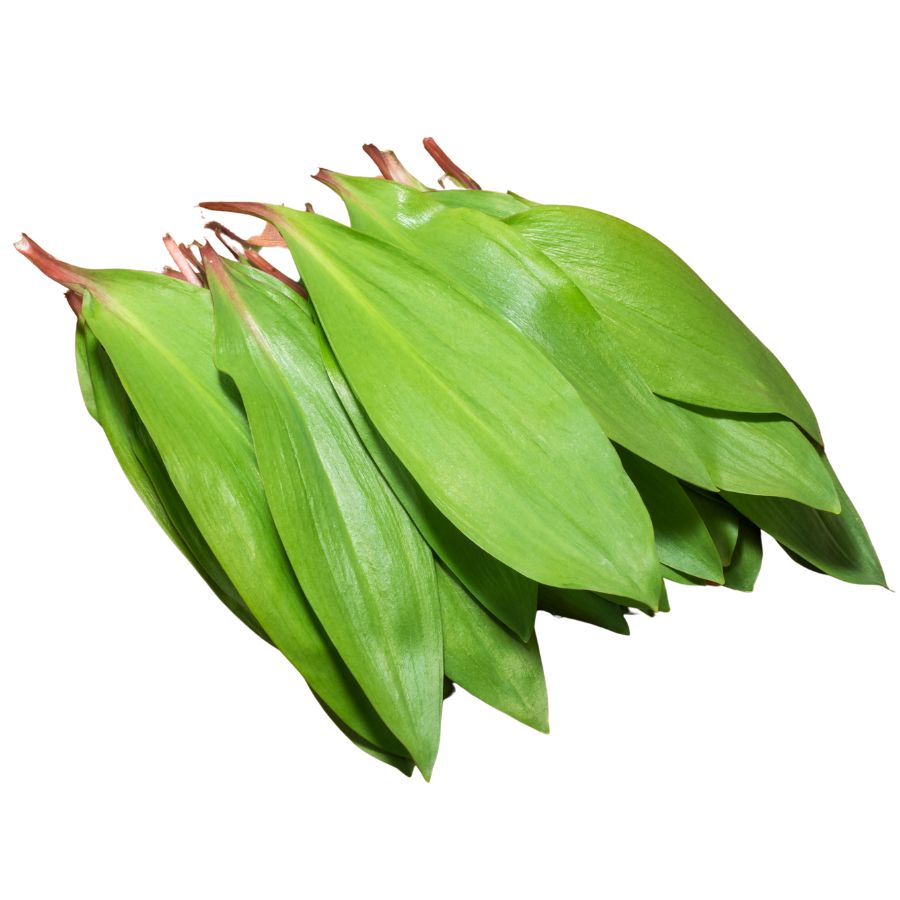
Known as wild leek, ramp, or ramson, this flavorful plant is famous for its broad green leaves and slender white stems. It grows low to the ground and gives off a strong onion-like scent when bruised, which can help you tell it apart from toxic lookalikes like lily of the valley.
If you give it a taste, you will notice a bold mix of onion and garlic flavors, with a tender texture that softens even more when cooked. People often sauté the leaves and stems, pickle the bulbs, or blend them into pestos and soups.
The entire plant can be used for cooking, but the leaves and bulbs are the most prized parts. It is important not to confuse it with similar-looking plants that do not have the signature onion smell when crushed.
Wild leek populations have declined in some areas because of overharvesting, so it is a good idea to only take a few from any given patch. When harvested thoughtfully, these vibrant greens can add a punch of flavor to just about anything you make.
Shagbark Hickory Nuts (Carya ovata)
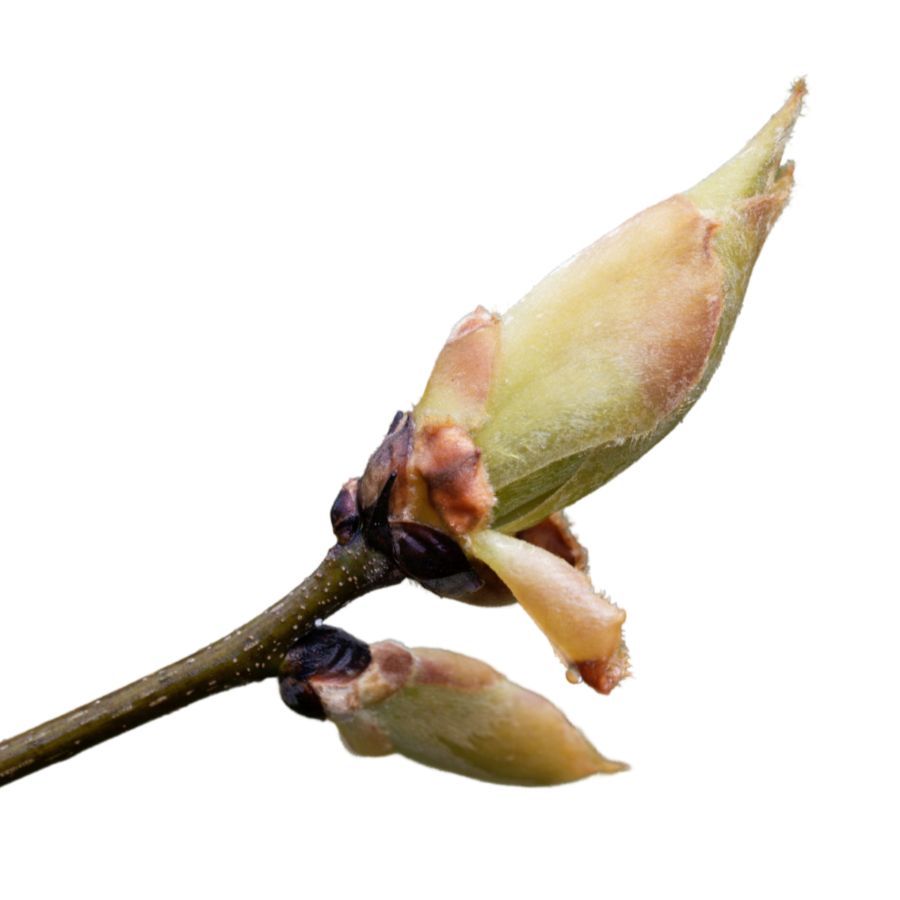
The shagbark hickory tree is easy to spot because its bark peels off in long, curly strips. These trees can grow very tall and make sweet nuts inside woody husks that split open when ripe in fall.
Inside the hard shell is a light-colored nutmeat that tastes buttery and rich. Many people think they taste better than store-bought pecans.
You can tell it’s a shagbark hickory by looking at the peeling bark and the shape of the nuts. The nutmeat is full of healthy fats, protein, and minerals that Native Americans used as an important food.
When collecting these nuts, only take ones that have fallen with husks already split open. Be careful not to mix them up with bitternut hickory nuts, which taste terrible and have thinner husks and pointy buds.
Wild Hopniss (Apios americana)

Native Americans ate wild hopniss long before Europeans came to America. This climbing plant grows small potato-like tubers underground, connected like beads on a string. People relied on these tubers when other foods were scarce.
These tubers taste like potatoes but with a nutty flavor that gets stronger when cooked. They’re special because they have three times more protein than regular potatoes.
You’ll find hopniss growing in wet areas near streams and at the edges of woods. It has pretty reddish-purple flowers in summer. When you dig up the tubers, leave the small ones so they can grow for next time.
You can eat the tubers and sometimes the beans, but the beans must be cooked well. There aren’t any dangerous plants that look like hopniss, so it’s pretty safe to collect. It’s valuable because of its high protein and because it helps make soil healthier.
Chanterelle Mushroom (Cantharellus cibarius)

Chanterelles are bright yellow-orange mushrooms shaped like trumpets that grow on forest floors. They smell fruity, almost like apricots. These mushrooms grow with tree roots in a way that helps both the tree and the mushroom, so people can’t grow them on farms.
Instead of flat gills, chanterelles have ridge-like folds that run down the stem. You can eat the whole mushroom. They have a mild, slightly peppery taste that gets better when cooked slowly.
Be careful not to mix them up with the poisonous false chanterelle, which has true gills and a darker color. Another lookalike is the jack-o-lantern mushroom, which grows on wood and glows in the dark.
It’s best to clean chanterelles with a brush instead of washing them. They contain vitamin D, copper, and potassium while being low in calories. Because they’re hard to find and can’t be farmed, they often sell for more than $20 per pound.
Butternuts (Juglans cinerea)
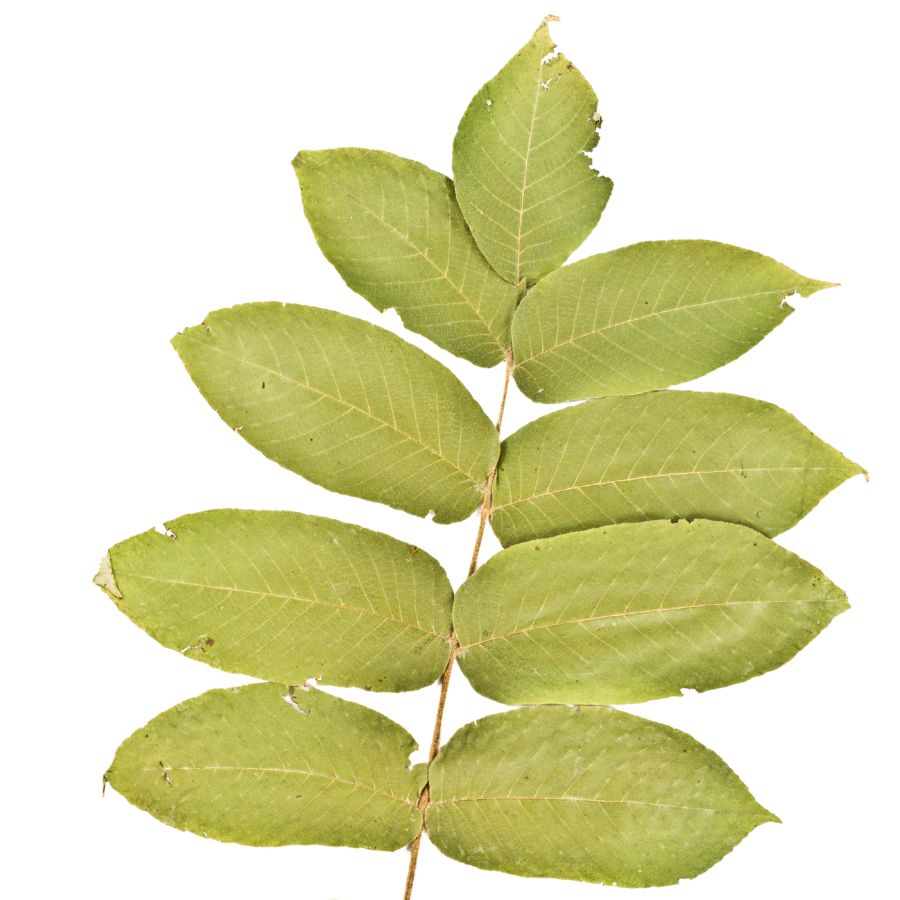
Butternuts have long, pointed shells with deep ridges that make them look different from other nuts. The trees make sticky green coverings that hold these nuts. When dried properly, the nuts inside have a mild, buttery flavor.
Sadly, butternut trees are becoming rare because of a disease called butternut canker. The nuts have healthy oils, protein, and minerals that early settlers and Native Americans valued.
To harvest butternuts, collect them when they fall and remove the outer covering, which will turn your hands brown. Unlike round black walnuts, butternuts are longer and more oval-shaped.
You can eat the nutmeat raw or cooked. People used to make oil from them for cooking and for lamp fuel. Every part of the tree except the nut contains a substance called juglone, which can harm some plants. Finding healthy butternut trees is rare now, making these nuts special for foragers.
Wild Bee Balm (Monarda didyma)
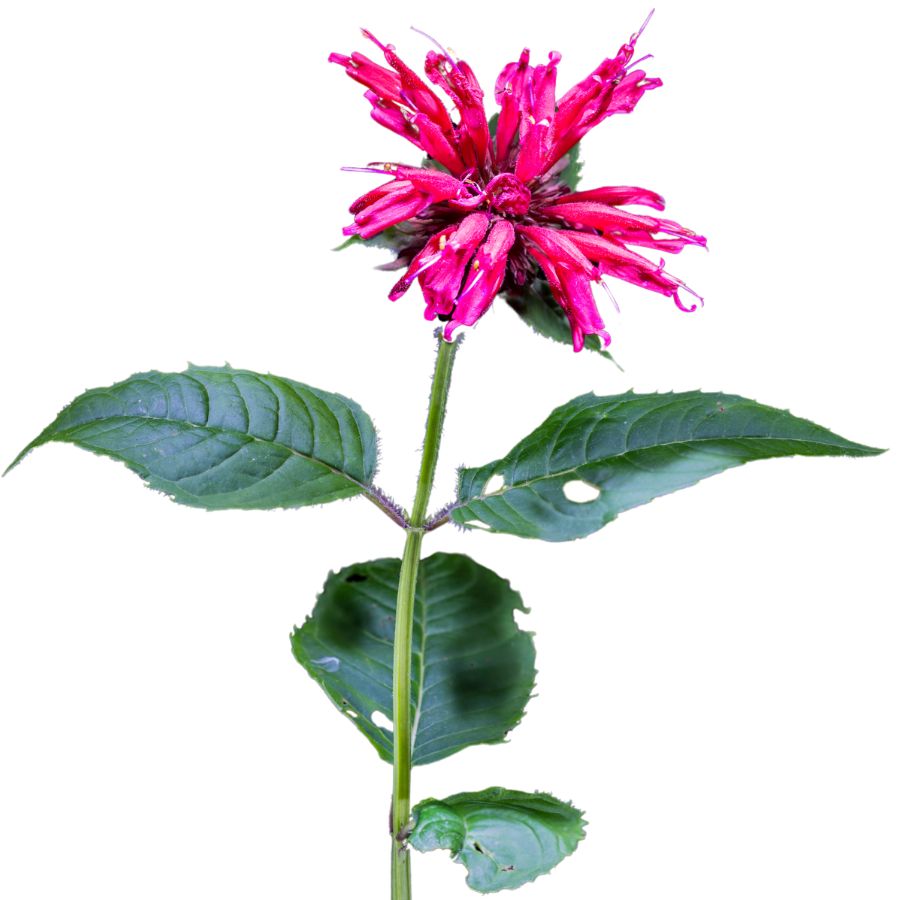
Also called bergamot, horsemint, or Oswego tea, bee balm is a bright plant with scarlet-red blooms that attract hummingbirds and bees alike. The leaves are what you would use for food, offering a spicy, minty scent that stands out when crushed between your fingers.
If you ever come across wild mints or even purple bergamot, keep in mind that while they are related, their flavors are different and some varieties can be harsher or more bitter. Bee balm leaves have a softer bite and a hint of oregano-like warmth, setting them apart from tougher wild mints.
The flowers and leaves both have a strong flavor that works well for brewing into teas or infusing into syrups. Some people also chop the leaves and sprinkle them into salads or use them as a seasoning, especially with meats or roasted vegetables.
Although bee balm is generally safe, using too much at once can cause slight stomach upset if you’re sensitive to strong plants. It is interesting to know that long ago, certain Native American groups made a tea from the leaves as a calming drink after meals.
Frost Grape (Vitis vulpina)

Frost grapes grow as small bunches of dark purple berries on woody vines that climb up trees. They’re called frost grapes because they taste better after the first frost makes them softer and sweeter.
These wild grapes grow on climbing vines with heart-shaped leaves that have toothed edges. The leaves don’t have fuzzy undersides like some other grape types. The grape clusters are small with berries about the size of peas.
Only eat the ripe berries. The leaves, tendrils, and unripe fruit contain substances that can upset your stomach. While you can eat the grapes fresh, many people make them into jelly, juice, or wine because of their strong flavor.
You can tell wild grapes from harmful berries because they always grow on woody vines with curly tendrils. When you’re sure you’ve found frost grapes, they’re completely safe to eat. They’re packed with antioxidants and have a unique flavor that makes them worth searching for, even though they’re small.
Black Walnut (Juglans nigra)
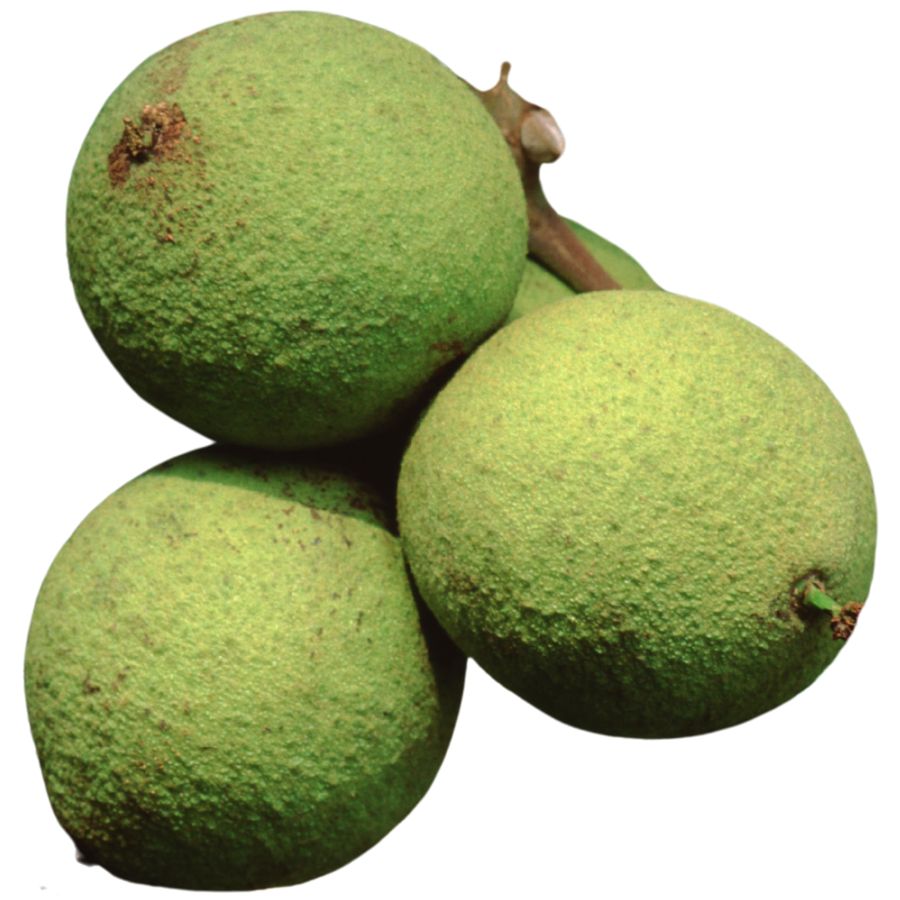
The nuts of the black walnut, sometimes called American walnut or eastern black walnut, have a tough outer husk and a deeply ridged shell inside. When you crack them open, you will find a rich, oily seed with an earthy, slightly bitter flavor that sets them apart from the sweeter English walnut.
It is easy to confuse black walnut with butternut, another tree with compound leaves and rough bark. If you check the nuts closely, black walnut fruits are round with a thick green husk, while butternuts are more oval and sticky.
When you get your hands on the nuts, the common ways to prepare them include baking them into cookies, sprinkling them over salads, or grinding them into a strong-tasting flour. The seeds themselves have a firm, almost chewy texture when raw and become crunchy after roasting.
Only the inner seed is eaten, while the outer husk and shell are discarded because they contain compounds that can irritate your skin. A fun fact about this plant is that even the roots and leaves produce a chemical called juglone, which can make it hard for other plants to grow nearby.
Wood Ear Mushroom (Auricularia americana)
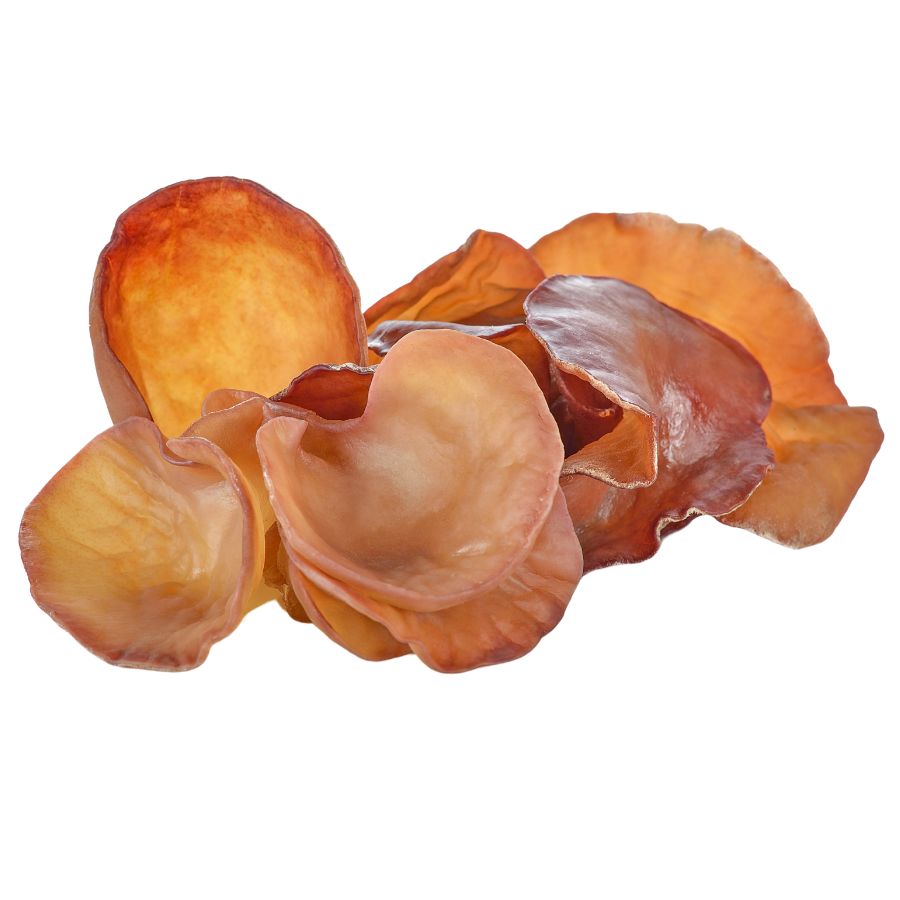
Wood ear mushrooms look just like their name suggests – like brown, wrinkled ears growing on dead trees. These rubbery fungi range from dark brown to almost black and feel gelatinous when wet but become hard and brittle when dry.
When you find these mushrooms, they’ll almost always be growing on dead hardwood trees, especially elder trees. They don’t have gills, stems, or caps like typical mushrooms. Instead, they form wavy, ear-shaped structures attached directly to the wood.
Wood ears have a mild taste and a unique crunchy-yet-slippery texture that stays firm even after cooking. This texture makes them popular in many Asian soups and stir-fries.
All parts of wood ear mushrooms are edible, and they’re easy to identify with few dangerous lookalikes. The similar-looking witch’s butter fungus is yellow to orange and harmless. Wood ears are valuable not just for food but also for their medicinal properties; they contain compounds that may help reduce blood clotting and lower cholesterol.
Cauliflower Mushroom (Sparassis americana)

Looking like a giant brain-shaped clump of egg noodles, the cauliflower mushroom can grow to the size of a basketball. This cream-colored fungus has wavy, flattened branches that fold and curl like ribbons, creating a structure that resembles cauliflower.
The cauliflower mushroom grows at the base of trees, especially pines, where it forms a relationship with the tree roots. It has a pleasant smell similar to bread dough and a mild, nutty flavor that some compare to almonds or egg noodles.
Identifying this mushroom is easy due to its unique appearance; no other wild mushroom looks quite like it. The entire fungus is edible, though the central core can be tough in larger specimens.
Before cooking, clean it thoroughly as the many folds can trap dirt and tiny insects. Young cauliflower mushrooms are best for eating.
Where to Find Valuable Forageables in the State
Some parts of the state are better than others when it comes to finding valuable wild plants and mushrooms. Here are the different places where you’re most likely to have luck:
| Plant | Locations |
|---|---|
| Pawpaw (Asimina triloba) | – Red River Gorge area – Bernheim Arboretum – Carter Caves State Resort Park |
| Hen of the Woods (Grifola frondosa) | – Jefferson Memorial Forest – Greenbo Lake State Resort Park – Taylorsville Lake WMA |
| Sassafras Leaves (Sassafras albidum) | – Big Bone Lick State Historic Site – Mammoth Cave area (non-federal zones) – Knobs State Forest |
| Black Morel (Morchella elata) | – Lake Cumberland WMA – Robinson Forest – Pennyrile State Forest |
| Spicebush Berries (Lindera benzoin) | – E. P. Tom Sawyer State Park – Pine Mountain State Resort Park – Veterans Memorial WMA |
| Wild Hazelnut (Corylus americana) | – Lloyd WMA – Yellowbank WMA – John B. Stephenson Memorial Forest |
| Wild Elderflowers (Sambucus canadensis) | – Yatesville Lake WMA – Grayson Lake State Park – Kentucky Ridge State Forest |
| Wild Ramps (Allium tricoccum) | – Boone Forestlands WMA – Kingdom Come State Park – Mill Creek WMA |
| Shagbark Hickory Nuts (Carya ovata) | – Lincoln Homestead State Park – Fern Lake WMA – Jenny Wiley State Resort Park |
| Wild Hopniss / Groundnut (Apios americana) | – Green River Lake State Park – Ballard WMA – Metcalfe County woodlands |
| Chanterelle Mushroom (Cantharellus cibarius) | – John James Audubon State Park – Martin State Forest – Marion County hills |
| Butternuts (Juglans cinerea) | – Morgan County uplands – Laurel River Lake area – Blue Licks Battlefield State Park |
| Wild Bee Balm (Monarda didyma) | – Brigadoon State Nature Preserve – Jefferson County nature trails – Carter County meadows |
| Frost Grape (Vitis vulpina) | – Taylor County roadside woods – Nolin Lake area – Fleming WMA |
| Black Walnut (Juglans nigra) | – Barren River Lake area – McCreary County trails – Reelfoot Lake border woods |
| Wood Ear Mushroom (Auricularia americana) | – Peabody WMA – Clay Hill Memorial Forest – Jenny Hole Section of Ohio River |
| Cauliflower Mushroom (Sparassis americana) | – Peabody WMA – Clay Hill Memorial Forest – Jenny Hole Section of the Ohio River |
When to Forage for Maximum Value
Every valuable wild plant or mushroom has its season. Here’s a look at the best times for harvest:
| Plants | Valuable Parts | Best Harvest Season |
|---|---|---|
| Pawpaw (Asimina triloba) | Ripe fruit | August – September |
| Hen of the Woods (Grifola frondosa) | Fruiting body (young clusters) | September – November |
| Sassafras (Sassafras albidum) | Young leaves | April – June |
| Black Morel (Morchella elata) | Fruiting body | April – May |
| Spicebush (Lindera benzoin) | Berries | September – October |
| Wild Hazelnut (Corylus americana) | Nutmeats (mature nuts) | August – September |
| Elderflower (Sambucus canadensis) | Flowers | May – June |
| Wild Ramps (Allium tricoccum) | Leaves (spring), bulbs (late spring) | Leaves: March – April, Bulbs: April – May |
| Shagbark Hickory (Carya ovata) | Nutmeats | September – October |
| Groundnut (Apios americana) | Tubers | September – November |
| Chanterelle (Cantharellus cibarius) | Fruiting body | June – August |
| Butternut (Juglans cinerea) | Nutmeats | September – October |
| Wild Bee Balm (Monarda didyma) | Leaves and flowers | June – August |
| Frost Grape (Vitis vulpina) | Ripe fruit | September – October |
| Black Walnut (Juglans nigra) | Nutmeats | September – October |
| Wood Ear (Auricularia americana) | Fruiting body | March – May, October – November |
| Cauliflower Mushroom (Sparassis americana) | Fruiting body | September – November |
One Final Disclaimer
The information provided in this article is for general informational and educational purposes only. Foraging for wild plants and mushrooms involves inherent risks. Some wild plants and mushrooms are toxic and can be easily mistaken for edible varieties.
Before ingesting anything, it should be identified with 100% certainty as edible by someone qualified and experienced in mushroom and plant identification, such as a professional mycologist or an expert forager. Misidentification can lead to serious illness or death.
All mushrooms and plants have the potential to cause severe adverse reactions in certain individuals, even death. If you are consuming foraged items, it is crucial to cook them thoroughly and properly and only eat a small portion to test for personal tolerance. Some people may have allergies or sensitivities to specific mushrooms and plants, even if they are considered safe for others.
Foraged items should always be fully cooked with proper instructions to ensure they are safe to eat. Many wild mushrooms and plants contain toxins and compounds that can be harmful if ingested.

